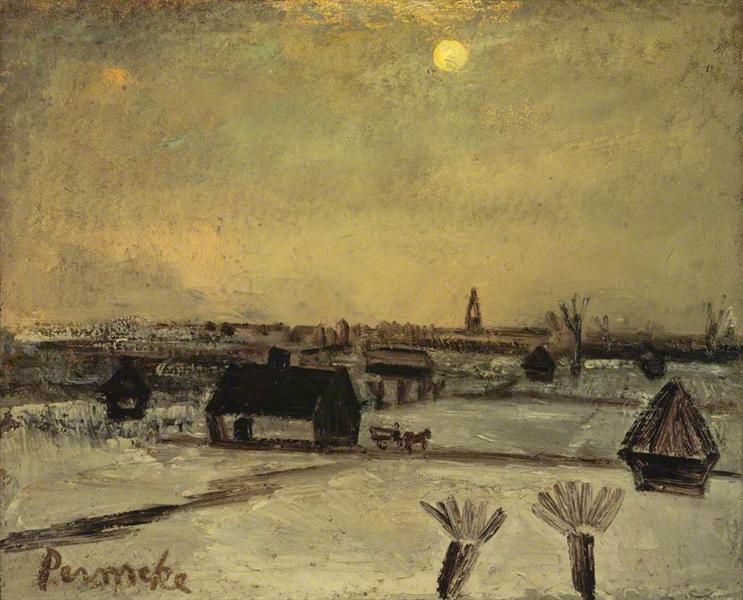Description
Constant Permeke, one of the pillars of Belgian expressionism, stands out in the history of art for its ability to transform light and atmosphere into powerful visual manifestations. His work "Hiver in Flandre" (winter in Flanders) of 1930 is a clear reflection of the domain he possessed on the language of color and shape, and provides a deep sense of the place that one cannot overlook. In this painting, Permeke portrays a winter landscape with a density and wealth that invite the viewer to immerse themselves in the very essence of Flanders during the cold station.
When observing the work, the use of a cold -colored palette, dominated by bluish and grayish tones, precisely evokes the severity of winter. These colors, which are often associated with sadness and introspection, are intertwined with warmer nuances that provide a subtle emotional complexity to the scene. Permeke uses color not only as a means of representation, but as a true narrator of feelings, evoking the stillness and desolation that often accompany winter days in this region.
As for the composition, the work is organized so that the landscape elements are grouped into a wide and open space, which results in a sense of isolation and calm. The shapes of trees and houses, presented with a gestural and almost abstract line, merger with the winter background, creating a connection between man and nature that is characteristic of Permeke's work. This fusion of the human with the natural not only reflects the influence of post -impressionism, but also anticipates certain trends of modern art that advocate the representation of space and the subject in a more emotional way.
It is important to point out the absence of human figures in painting, a feature that, far from subtracting interest into the work, gives it a significant symbolic burden. The lack of characters can be interpreted as a statement about loneliness and introspection that winter can bring us, suggesting that the landscape itself is a testimony of the internal emotional state of man. The houses, visible in the background, seem to echo the human presence, although in a distant way, remembering that life continues even in the moments of greatest desolation.
The painting is also inscribed within the movement of expressionism, which seeks to communicate the subjective experience of the world through emotions. In this sense, "Hiver in Flandre" can be compared to contemporary works of artists such as Vincent Van Gogh or Edvard Munch, although Permeke's particularities highlight their singularity. Its focus on mass, shape and color not only establishes a link with the tradition of flamenco painting, but also introduces a modern language that continues to resonate today.
In short, "Hiver in Flandre" is not only a representation of a winter landscape, but a meditation on the human being in its natural context, a visual testimony that explores the intersection between the place and the emotion. Constant Permeke's work remains relevant not only for its technical quality, but for its ability to evoke universal feelings through the representation of the environment; A reminder that art can capture the essence of time and space, transforming the everyday into something extraordinary.
KUADROS ©, a famous paint on your wall.
Hand-made oil painting reproductions, with the quality of professional artists and the distinctive seal of KUADROS ©.
Art reproduction service with satisfaction guarantee. If you are not completely satisfied with the replica of your painting, we refund your money 100%.

